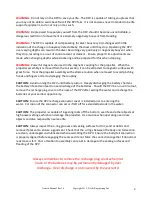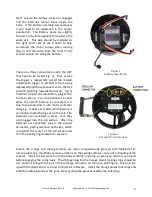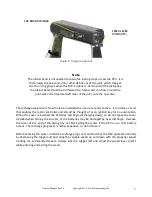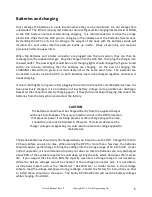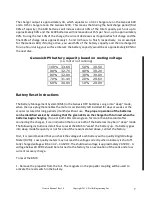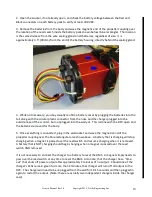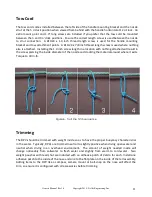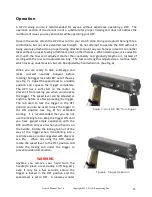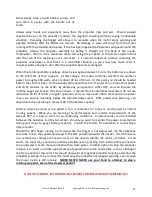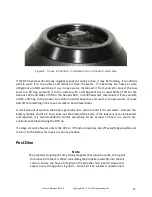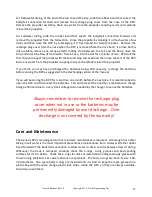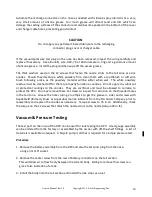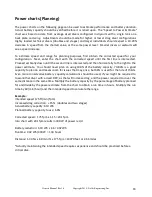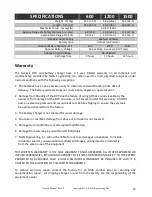
Genesis Manual Rev1.6 Copyright 2018, Nellis Engineering, Inc.
18
Power charts (Planning)
The power charts on the following page can be used to estimate performance and battery duration.
Actual battery capacity should be verified before it is relied upon. The "Speed to Power Estimate"
chart was based on data from average sized divers configured in drysuits with a single tank on a
back plate and wing. Adjustments should be made for higher or lower drag diver configurations.
Highly loaded technical divers (doubles and stages) and larger individuals should expect a 10-20%
decrease in speed from the charted value, at the same power level. Smaller divers or wetsuits will
see a speed increase.
To estimate speed and range for planning purposes, first obtain the corrected speed for your
configuration. Next, enter the chart with the corrected speed until the first line is intersected.
Proceed vertically down until the second line is intersected and then horizontally to the right to the
power estimate. You should never plan on using 100% of the battery capacity, 70-80% is a good
capacity to plan on and leaves room for issues that may arise, but 66% is used for the rule of thirds.
Even more conservative battery capacity calculations should be used, if you might be required to
tow another diver with a dead DPV, as that will increase drag, and the power required to cover the
same distance in the same time. Multiply the battery capacity by the percentage of battery planned
for and divide by the power estimate from the chart to obtain a run time in hours. Multiply the run
time by 60 (min/hour) and the intended speed to calculate the range.
Example:
Intended speed 175 ft/min (fpm)
Increased drag correction: +15% (doubles and two stages)
Actual battery capacity: 610 Wh
Planned battery capacity to use: 66%
Corrected speed: 175 fpm x 1.15 = 201 fpm
Into chart with 201 fpm results in 300 W of power req'd
Battery reduction: 610 Wh x .66 = 402 Wh
Runtime: 402 Wh/300 W = 1.34 hours
Distance: 1.34 hrs x 60 min/hr x 175 fpm = 14070 feet or 2.66 miles
*Actually maintaining the intended speed requires experience and should be practiced before a
critical dive.

